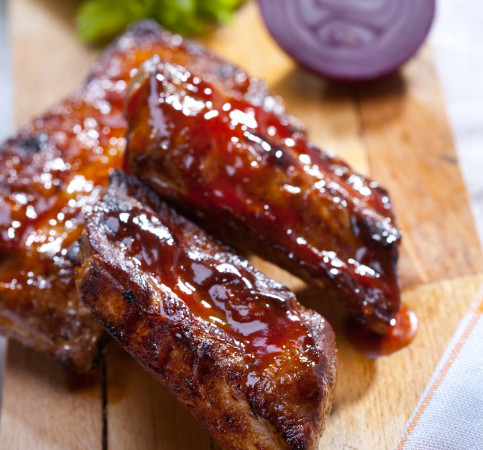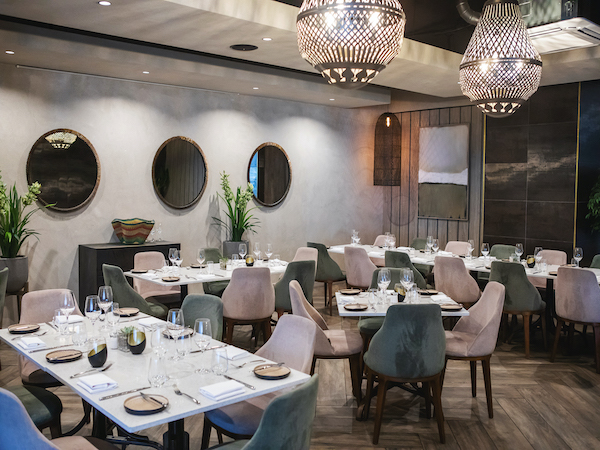News
A new foodie buzzword: bistronomia
Friday, August 1st, 2008
If you happen to be looking for a new foodie buzzword to casually drop at your next swish dinner party, listen up: bistronomia is the phrase du jour and it’s whispered by members of high society and foodies-in-the-know, from the cuisine capitals of Barcelona and Paris to the sidewalks of New York.
A combination of bistro and gastronomia (gastronomy), bistronomia is haute cuisine in all its glory but without the inflated bill and fiddly portion sizes.
So who are the instigators of this mezzaluna-edged trend? The term was seemingly picked from the collective foodie-subconscious by both the Spanish food writer, Pau Arenós, and the French journalist, Sebastián Demerold.
Arenós, who writes for the Barcelonian newspaper, El Periódico, conjured the term when he noticed the growing number of restaurants being opened by young chefs with excellent training but a shoestring budget, serving sophisticated, innovative fare at reasonable prices.
Perhaps the most famous example is Gresca, a small eatery headed by chef Rafa Peña, whos been described as the most influential spokesperson of bistronomia by the New York Times. He derives inspiration from the philosophy of his Spanish counterpart, Ferran Adria, that a good sardine is better than a mediocre lobster.
And so, seemingly inferior ingredients of exceptional quality are transformed into chic, but simple end results: a grilled sardine is draped in paper-thin Pancetta and finished off with a sprinkling of sesame seeds, while a once unfussy egg is deconstructed, souffléd and reconstituted, before perched atop a bed of savoury veg.
Across the border, unbeknownst to Pau Arenós, a journalist for the French magazine Zurbaran, Sebastián Demerold, had also noticed a new type of restaurant that wasn’t quite fancy enough to qualify as gastronomic, but was far superior to the traditional bistro.
In the mid-naughties, French chef Alain Senderens paved the way for what would later be coined by Demerold as bistronomia, when he rejected a Michelin star that was awarded to his brasserie, Place de la Madelain, because he felt that it would prevent him from keeping the prices on his menu within reasonable limits.
Following suit, Yves Camdeborde opened the revered Le Comptoir in a tiny Parisian hotel, Relais Saint Germain.
At 28, Camdeborde wanted to open a restaurant but could hardly afford to eat at the restaurants where he had been trained, so he bought a bistro in the far reaches of Paris and started serving impressive fare at previously unheard of prices.
Described by Foodandwine.com as “wildly exciting and ridiculously inexpensive”, the dishes in Le Comptoir are aptly bistronomic, transforming the seemingly straightforward into the unexpected: a lentil soup with sheep’s-milk cheese is thickened with tapioca and served cold with mint, and a shepherd’s pie is filled with tender beef cheeks and topped with a mash of potato and celeriac root.
So, how much would a bistronomic meal set one back? At Embat, one of Barcelona’s latest bistronomic hotspots, you can expect to pay around 21 euros (R240) for a three-course lunch including the likes of fresh cheese ravioli with lemon and bacon, or cod with prunes and mushrooms. At Le Comptoir’s a five-course set menu amounts to approximately 45 euros (R520).
Perhaps not the most attractive price by South African standards – nonetheless, with rising food costs, the economy of bistronomia seems very well suited to a South African climate. So how would our chefs go about transforming some humble local fare into affordable but swish dishes?
Amadumbe and bokkom crouquette anyone?
Annette Klinger
For a glimpse of some bistronomic creations as captured on Flickr, click on the restaurant names below:
Gresca
Embat
Or visit the New York Times gallery.








